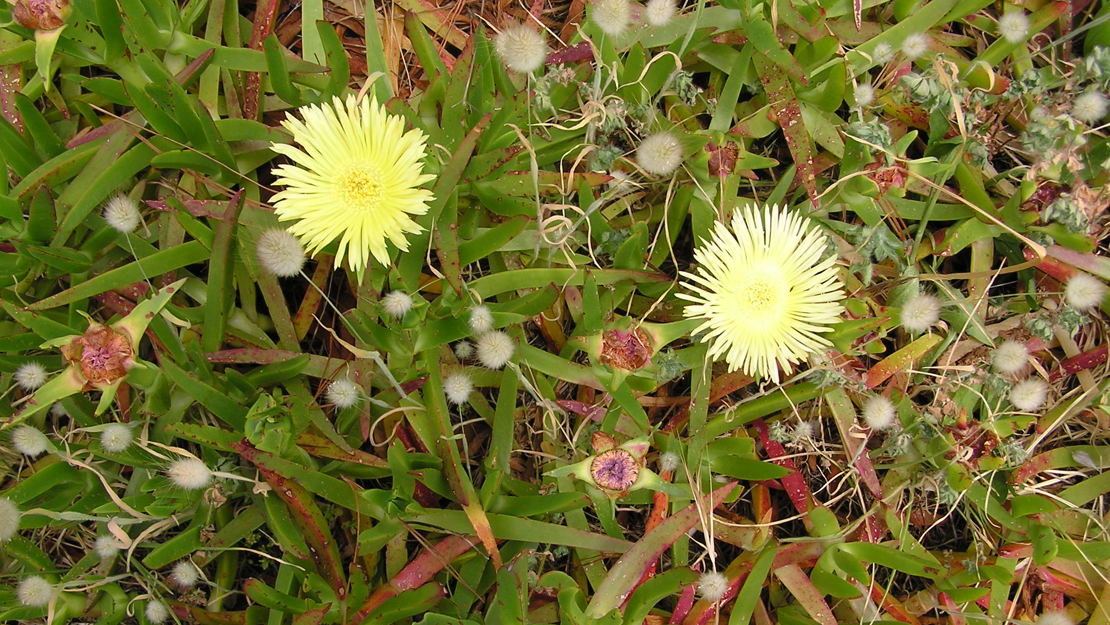Carpobrotus edulis and hybrids
Iceplant
Family: Aizoaceae
Origin: South Africa

Regional Pest Management Plan (RPMP) status
- National Pest Plant Accord Species
- Whole region — Sustained control
General description
Perennial stoloniferous, succulent herb. Stems are < 6 m long. Leaves are triangular and finger-shaped. Flowers are < 10 cm in diameter, yellow/pink/red and borne in October – February.
What you need to know
To help protect our environment:
- You must not breed, distribute, release or sell iceplant. As iceplant is a National Pest Plant Accord species, these restrictions apply within the Auckland region and across the whole of New Zealand.
- You must not plant iceplant within the Auckland region, unless you are transferring an existing plant on your land to another location within the boundaries of the same property.
- You must destroy any iceplant on land that you occupy if it has been planted in breach of the above rules and you are directed to do so by an authorised person.
Habitats
Coastal cliffs, sand dunes.
Dispersal
Seeds dispersed by mammals. Vegetative spread from stem fragments.
Impact on environment
Smothers and competes with native vegetation and modifies soil chemistry. Reduces germination and survival of native vegetation and decreases native species’ richness. Affects genetic diversity of related native species through hybridisation.
Control
Site Management
Follow up treated areas 3 times per year. Encourage natural regeneration of native plants or replant treated areas where possible after 2-3 treatments to establish dense ground cover and minimise reinvasion.
Recommended approaches
Physical control
Method: Dig out.
Plant parts requiring disposal: All parts.
Disposal options: Small amounts can be rotted in a covered water barrel, remove to greenwaste or landfill if practical or allow to dry upside down without touching the ground.
Biocontrol
Biocontrol is currently not available for this species.
Community agrichemical control recommendations
Certified Handler/Experienced agrichemical user: Foliar spray with 60ml triclopyr per 10 Litres of water and 20ml penetrant.
Caution: When using any herbicide or pesticide please read the label thoroughly to ensure that all instructions and safety requirements are followed.





